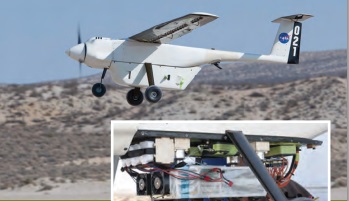Chapter: Fiber Optic Sensing, new invention technology, Research project papers,
Compact FOSS (cFOSS)

Compact FOSS (cFOSS)
Armstrong researchers are reducing the FOSS technology's size, power requirement, weight, and cost to effectively extend opportunities for broader fields of application. Unlike current commercially available systems, which are limited by the number of fibers that are interrogated simultaneously, Armstrong's cFOSS technology maintains its multi-fiber capability (four or eight fibers) while providing a smaller overall form factor. FOSS is the size of a shoebox and weighs 28.5 pounds; cFOSS will be the size of a 6-inch cube and weigh less than 10 pounds. Each component within the system has been custom-designed specifically for miniaturization, thus reducing capital costs. As industries strive for ever smaller profiles, this miniaturization will be an important benefit for multiple markets. For example, small aviation UAVs would benefit significantly from this smaller, more compact, and lightweight package.
Work to date: In partnership with the AERO Institute, researchers have flown the cFOSS v1.0 system, a convection-cooled 5-lb version, on a small UAV, interrogating four fibers simultaneously.
Looking ahead: By the end of December 2015, cFOSS v2.0, with conduction cooling, will fly on an Antares rocket.
Benefits
Compact: Miniaturized size requires less associated hardware than existing systems.
Reliable: Components are customized for aggressive environments yet maintain a compact form factor.
Applications
x Aeronautics and launch vehicles Medical procedures
x Oil drilling, wind energy, automotive testing, and industrial processes
Fiber Optic Sensing
Armstrong's portfolio of Fiber Optic Sensing System (FOSS) technologies offers unparalleled options for high-resolution sensing in applications that require a unique combination of high-powered processing and lightweight, flexible, and robust sensors. The system measures real-time strain, which can be used to determine two-dimensional and three-dimensional shape, temperature, liquid level, pressure, and loads, alone or in combination. Initially developed to monitor aircraft structures in flight, the system's capabilities open up myriad new applications for fiber optics-not just in aerospace but also for civil structures, transportation, oil and gas, medical, and many more industries.
The Armstrong approach employs fiber Bragg grating (FBG) sensors, optical frequency domain reflectometry (OFDR) sensing, and ultra-efficient algo-rithms (100 samples/second). Engineers are continually seeking new ways of looking at information and determining what is important. Armstrong's FOSS technologies focus on critical research needs. Whether it is used to determine shape, stress, temperature, pressure, strength, operational load, or liquid level, this technology offers ultra-fast, reliable measurements.
Related Topics